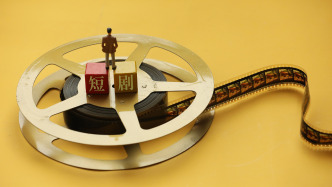
According to the China Online Audiovisual Development Research Report (2025), by December 2024, the number of micro-drama users will reach 662 million, and the duration of application usage will be equal to that of instant messaging. As an emerging form of art, micro-drama is rising at an astonishing speed and attracting widespread attention.
From the perspective of media attributes, movies, TV series and short dramas are essentially narrative carriers of images, and duration is one of their main differences. It is worth noting that the total duration of a multi-episode TV series far exceeds that of a single movie, and it is not uncommon for a multi-episode short drama to have a total duration that exceeds that of a traditional movie. The essential feature of a short drama lies in its dramatic core, which is the core element that distinguishes it from other short video formats.
Micro short dramas grew up in the fission period of digital technology and media integration. Once they started, they showed a development trend that was far ahead of others. The rise of micro short dramas is not only an innovation in art form, but also a microcosm of the transformation of information reception and aesthetic paradigms. From cinemas to televisions to mobile terminals, the trend of continuous compression of narrative units is essentially an inevitable choice to adapt to the changes in digital mobile carriers and the fragmented communication ecology. Today, micro short dramas have broken through the boundaries of online platforms and entered the television end, and may also enter cinemas in the future. This breakthrough of media barriers is not only due to the inherent logic of technological evolution, but also strongly driven by market choices.
Traditional film and television art was born in the industrial age, and its development follows a gradual path. The development of film has always been highly related to the development of media and technology, and attaches great importance to commercial nature. It is classified as mass culture and cultural industry, but it does not undermine the final establishment of its artistic value. The development trajectory of TV series also confirms that mass culture and elite art are not binary oppositions. Although short dramas are in different historical contexts, their growth soil also includes capital, market and popular culture elements. Historical experience shows that the marketization process and the boutique strategy can go hand in hand. Whoever takes the lead in laying out according to artistic logic may be the final winner.
Chinese film and television dramas have been able to take the lead in breaking through in many art categories, largely due to the market-oriented reforms promoted in the early stage. This provides us with an important reference: the development vitality of art forms is often positively correlated with their degree of marketization. The strong commercial momentum shown by short dramas at present is precisely their potential advantage for future development.
The current aesthetic taste of micro-short drama audiences is still in the cultivation stage. Data shows that the re-watching rate of micro-short drama users is not high, reflecting the communication characteristics of "instant consumption". The professional quality of the creative team is uneven, the industry threshold is getting lower and lower, and a large number of amateur creators are coming to the fore. Colleges and universities have the responsibility to accelerate the construction of a talent training system that adapts to digital creation. In addition, tendencies that violate the laws of creation, such as theme-first and conceptual routines, are also common.
What determines the vitality of an artistic form is ultimately its lasting artistic charm and its ability to respond to the propositions of the times. Driven by both policy guidance and industry awareness, short short plays will surely complete the transformation from phenomenon to art.
(The author is the president of Shanghai Theatre Academy and a playwright)


